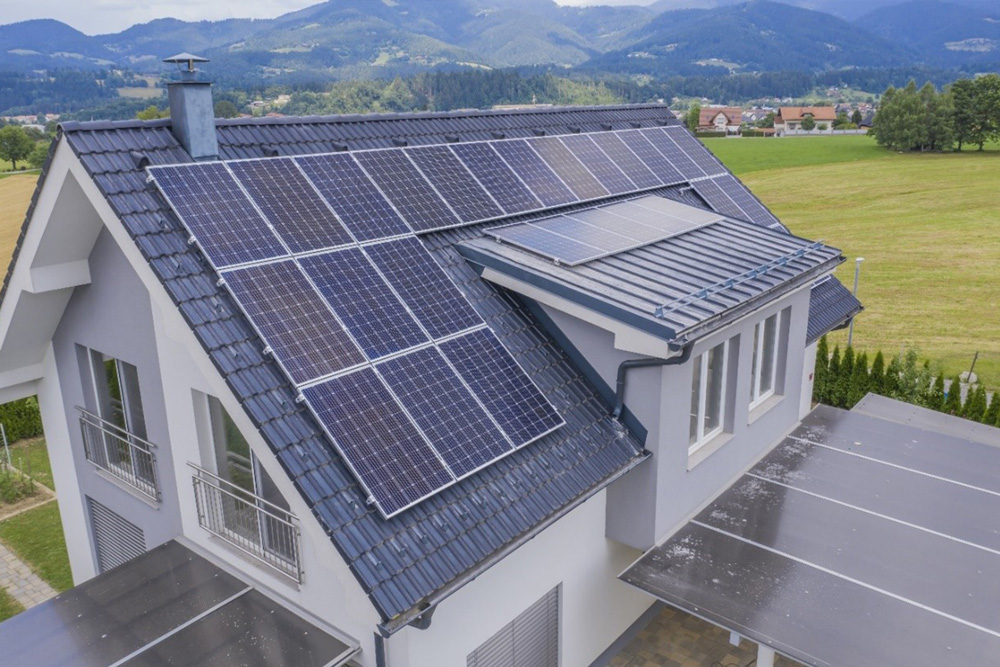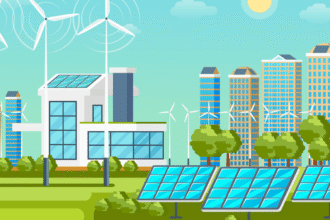In the U.S., how homes are powered and how that power is managed is rapidly evolving. With rising energy costs and expanded federal incentives, homeowners are no longer asking if they should go solar, but rather, what is the smartest way to do it?
The answer lies in the Solar-as-a-Service approach. By eliminating upfront costs and replacing ownership with low monthly subscriptions, this model is reshaping residential solar adoption, from California to Connecticut. As accessibility grows, the U.S. residential solar PV market is now on track to reach $17.68 billion in revenue by 2030, signaling a new era of energy for American households.
What Is Solar-as-a-Service?
Instead of making a significant upfront investment of $15,000–$25,000 to purchase and install solar panels, homeowners can now adopt a subscription model for solar energy. With no upfront costs, they pay a monthly fee based on the power generated, much like a traditional utility bill, but often at a lower cost and with a reduced environmental impact. This model provides a more accessible, cost-effective, and sustainable pathway to clean energy adoption.
This model is typically structured through:
- Power Purchase Agreements (PPAs): Homeowners buy the power at a fixed rate per kWh, usually 10–30% less than local utility rates.
- Solar Leases: Users lease the equipment and pay a flat monthly fee.
- Third-party ownership (TPO): The solar provider owns, installs, and maintains the system.
Innovation Driving the Shift
The blend of tech innovation, policy support, and consumer demand for hassle-free energy is powering this shift beyond financial convenience.
Smart Financing Platforms
Startups such as Mosaic, Sunlight Financial, and GoodLeap are digitizing the entire financing process for fast approvals, tailored plans, and embedded payments.
AI-Powered Energy Management
Providers such as Sunrun and Sunnova are bundling solar subscriptions with AI-based energy monitoring, helping users optimize usage and maximize savings.
Battery and Solar Bundles
Solar-as-a-Service now often includes home battery systems (e.g., Tesla Powerwall, Enphase IQ Batteries) under a single monthly subscription, adding backup power and grid independence.
Community Solar Subscriptions
In states such as Illinois and Colorado, community solar farms offer subscription access to renters or homeowners who cannot install rooftop panels, making solar even more accessible.
Policy Tailwinds: IRA and Net Metering
The Inflation Reduction Act (IRA) of 2022 continues to be a major catalyst for residential solar adoption. A 30% federal tax credit, now extended through 2032, significantly lowers the cost barrier for homeowners. Meanwhile, targeted incentives for low-income and tribal communities are motivating Solar-as-a-Service (SaaS) providers to expand access to underserved markets.
Why Business Professionals Should Care about Solar-as-a-Service?
Solar-as-a-service in the U.S. residential solar PV industry brings various growth opportunities as follows:
- Recurring Revenue Models: Monthly subscriptions create stable, long-term revenue—great for investors and operators.
- Low Customer Acquisition Costs: Digital-first onboarding and no-upfront costs improve conversion rates.
- Strategic Partnerships: Homebuilders, fintech companies, and utilities are integrating SaaS solar into their offerings.
Big players such as Sunrun, Tesla Energy, and Trinity Solar are aggressively scaling. Still, there is room for innovators to carve niches in underserved regions, multi-family housing, and bundled energy services.
What Future Holds for the Residential Solar PV Industry?
The next wave of growth in the solar subscription space is being driven by bundled clean energy solutions combining EV charging, solar panels, and battery storage into a single, streamlined subscription. Add to that the rise of dynamic pricing models, where customers benefit from real-time rates based on grid demand and weather conditions, and the emergence of Virtual Power Plants (VPPs), networks of solar-powered homes that contribute to grid stability and even generate revenue. As the energy landscape becomes more decentralized, these innovations are helping to democratize access to clean power, bringing us one rooftop closer to a smarter, more sustainable future.
















